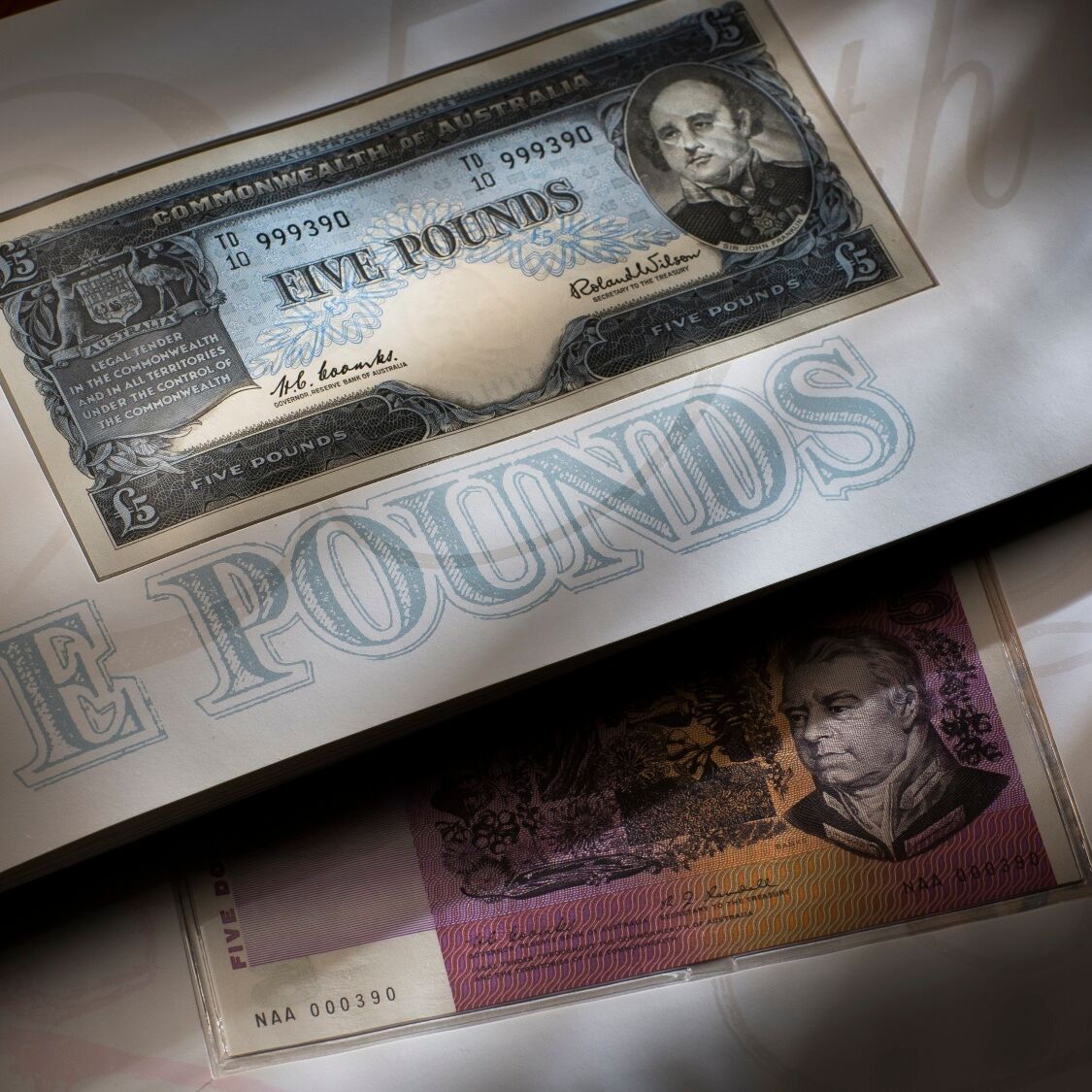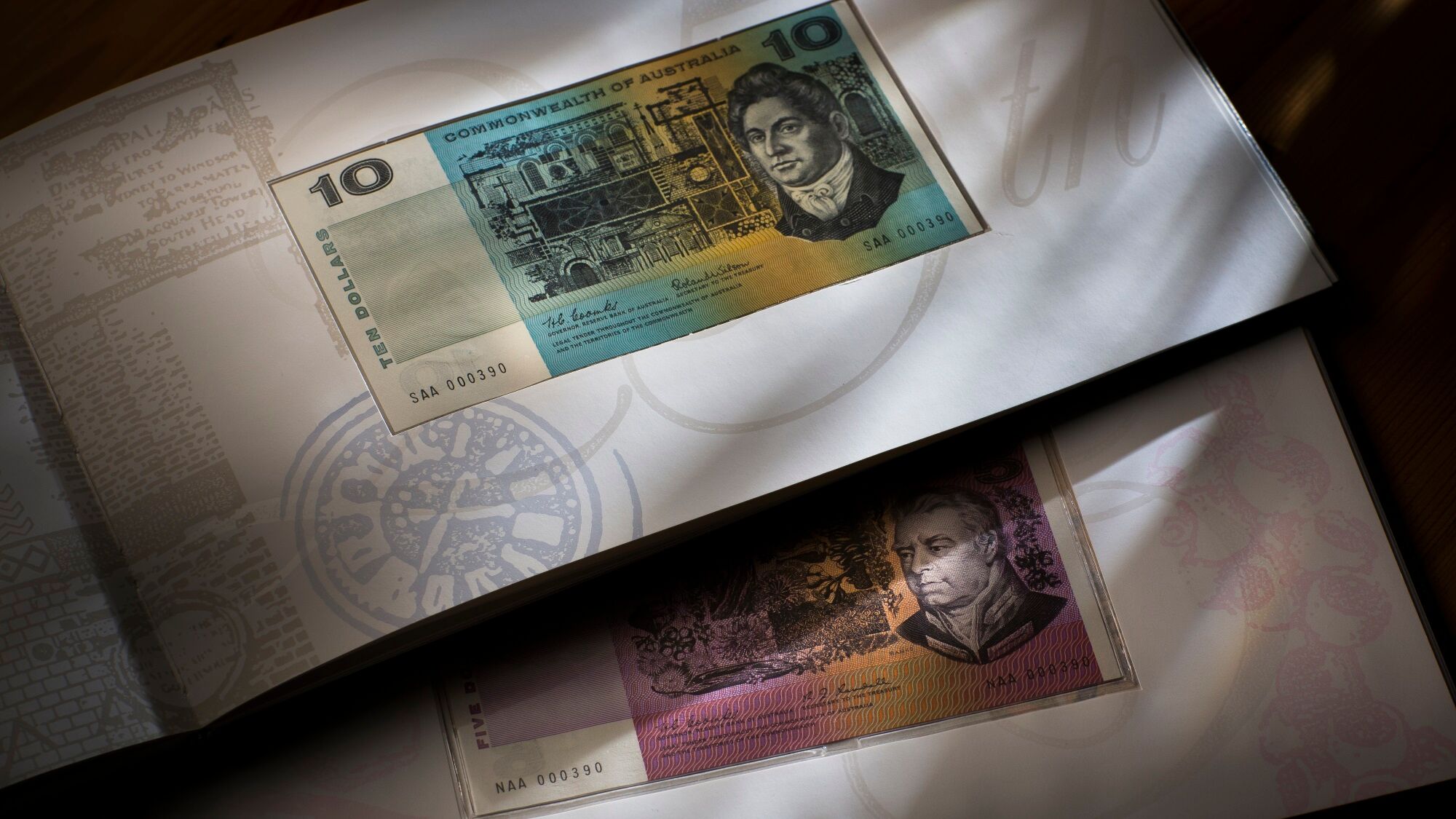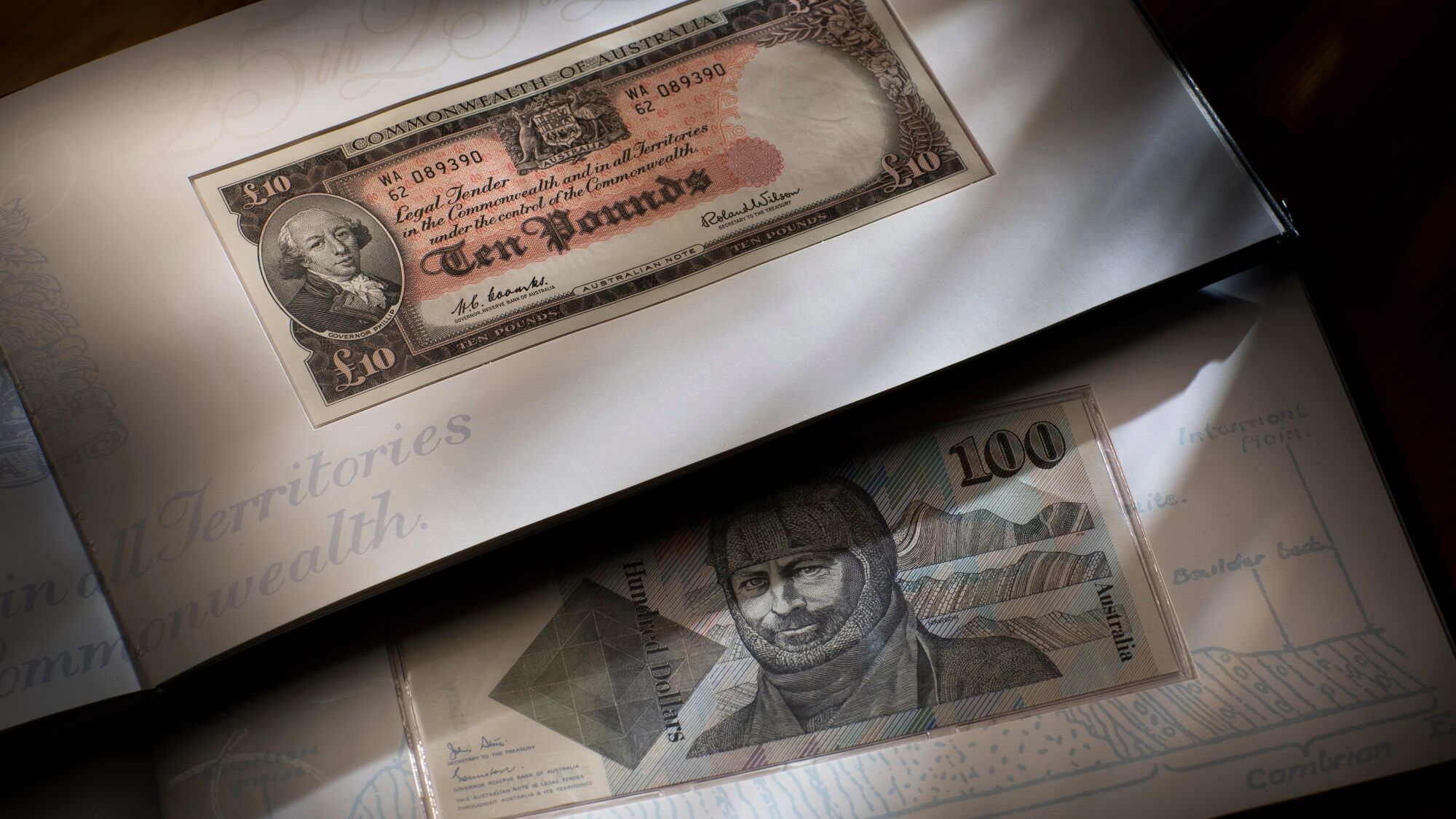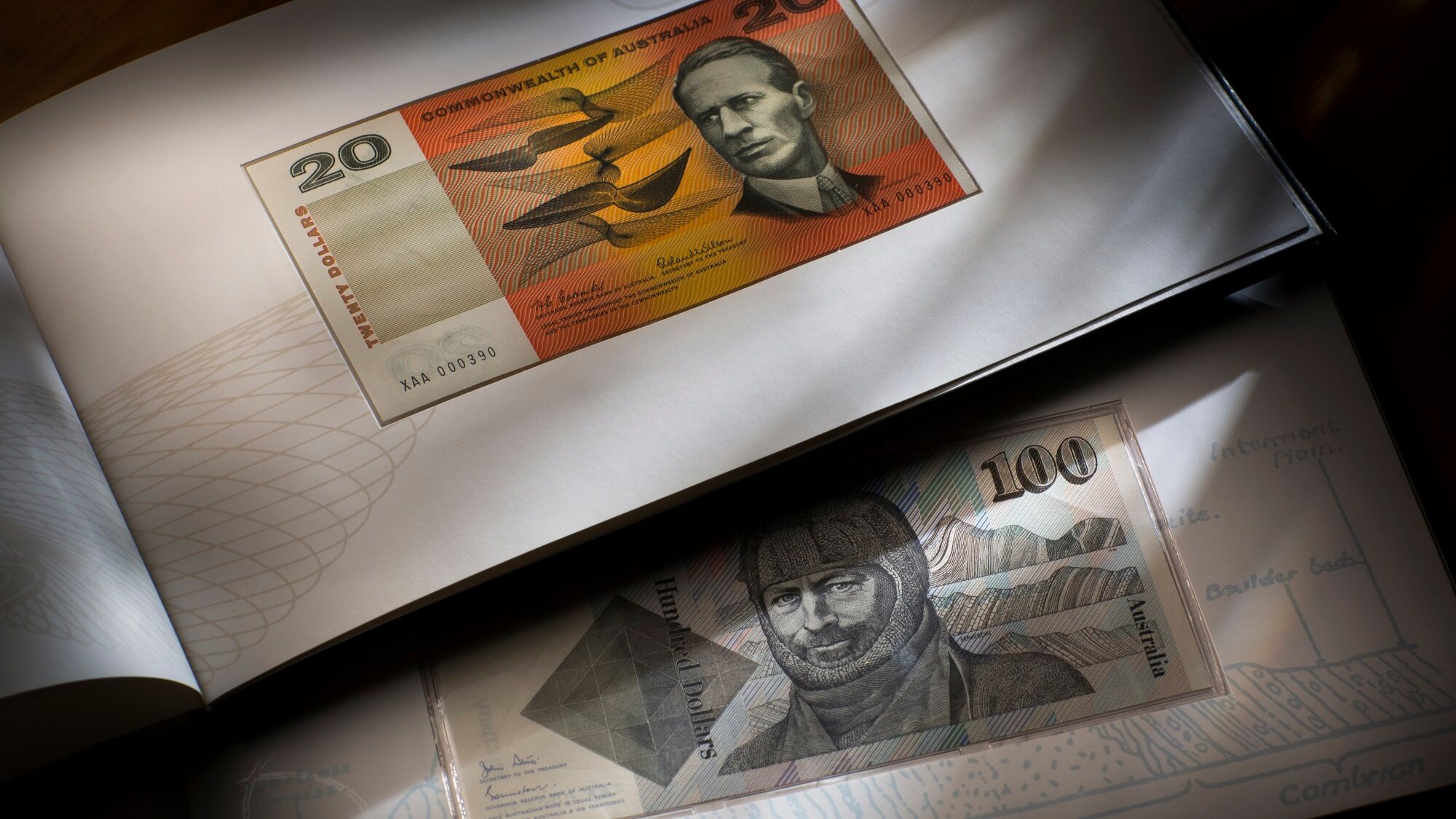Reserve Bank of Australia Rare Collector Editions. Officially numbered 390.

The notes had never circulated but had been especially set aside in the Reserve Bank of Australia’s ‘special holdings’.
Brilliant presentations. Each collection individually numbered as one of 800 produced.
The serial numbers of the banknotes were especially selected by the RBA to match the collection number.
A lucky few managed to acquire both collections with the same number.
Our client one such fortunate collector who fluked sets numbered 390.
The 25th Anniversary of Decimal Currency Rare Collector Edition, released in 1991 and this Collection numbered 390.
Decimal Currency changeover was a major chapter in Australia’s history that began in 1966.
Four decimal banknotes were introduced in that year, the $1, $2, $10 and $20 replacing their Ten Shillings, One Pound, Five Pound and Ten Pound monetary equivalents.
This collection includes the four pre-decimal banknotes that were being replaced, each is Uncirculated and selected from the very last print run.
- 1966 Ten Shillings, Coombs Wilson, Last Prefix AH69 999390
- 1966 One Pound Coombs Wilson Last Prefix HK68 359390
- 1966 Five Pounds Coombs Wilson Last Prefix TD10 999390
- 1966 Ten Pounds Coombs Wilson Last Prefix WA62 089390
The collection also includes the four decimal banknotes that were introduced as replacements for the aforementioned. Each note is Uncirculated and has been selected from the very first print run.
- 1966 $1 Coombs Wilson First Prefix AAA 000390
- 1966 $2 Coombs Wilson First Prefix FAA 000390
- 1966 $10 Coombs Wilson First Prefix SAA 000390
- 1966 $20 Coombs Wilson First Prefix XAA 000390
The Triple Anniversary Rare Collector Edition, released in 1994 and this Collection numbered 390.
Decimal changeover continued progressively with the introduction of $5 in 1967, the $50 in 1973 and the finishing touch of the high denomination $100 in 1983.
This collection includes an Uncirculated banknote from the very first print run of the $5, $50 and $100 and all with the same serial number.
A total of 800 sets were released and this set is also numbered 390.
- 1967 $5 Coombs Randall First Prefix NAA 000390
- 1973 $50 Phillips Wheeler First Prefix YAA 000390
- 1984 $100 Johnston Stone First Prefix ZAA 000390


Australia's Five Pounds featuring explorer and Governor of Tasmania, Sir John Franklin was replaced by the Ten Dollars, shown at right.
A portrait of Australia's first fully qualified architect (and former convict) Francis Greenaway featured on the new decimal Ten Dollars.
Note the continuation of the blue colour from the Five Pounds to the Ten Dollars.
A clever ploy by the Government to ensure a smooth transition to decimal currency.
The Five Dollars shown in the background is contained in the Triple Anniversary Collection released in 1994.


Australia's Ten Pounds featuring the first Governor of New South Wales, Governor Phillip was replaced by the Twenty Dollars, shown at right.
A portrait of Australia's pioneering aviator Sir Charles Kingsford Smith featured on the new Twenty Dollar banknote.
Note the continuation of the red colour from the Ten Pounds to the Twenty Dollars.
A clever ploy by the Government to ensure a smooth transition to decimal currency.
The One Hundred Dollars shown in the background is from the Triple Anniversary Collection released in 1994.
Official Decimal Currency changeover - 14 February 1966.
Decimal currency was mooted as far back as 1902, again in 1937 and through the 1950s.
It wasn’t until the late 1950s that the Menzies Government finally recognised the economic importance of converting Australia’s currency to a new decimalised one, in keeping with those of many of its trading partners and the overwhelming majority of the world.
The argument for switching came down to a simple practical consideration. The Australian pound, like its British counterpart, was divided into 20 shillings of 12 pence each, making the arithmetic of financial transactions unnecessarily difficult.
This wasn’t just a question of personal convenience but of national productivity. Research had shown that decimalisation would save the Australian economy more than £11 million a year, which would quickly offset the £30 million cost of conversion.
In the 1958 election campaign, Menzies promised to seriously consider decimalisation, but once in power did not exactly prioritise the issue.
Treasurer Harold Holt appointed a Decimal Currency Committee in February 1959 to examine the merits of decimalisation but it took three years to report. Sir Walter Scott (founder of Management Company W D Scott) headed the Committee.
However, following the committee’s recommendations, the government introduced the Currency Act 1963, which nominated 14 February 1966 as Changeover Day (or C-Day), followed by a two-year transition period during which both currencies would be legal tender.
Decimalisation gave Australia the opportunity to create an entirely new currency that, through its name and the design of its notes and coins, would reflect how the nation saw itself.
The Government announced a competition for the naming of our new currency. “Auster” was the name suggested by Holt (instead of dollar). Suggestions were as bizarre as: Magpie, Noodle, Pacific, Tasma, Anzac, Brumbie, Melba. Koala, Kanga, Roo, Emu and Merino. Politician’s names were also considered.
The cent was universally accepted.
In June 1963, Menzies, ever the monarchist, rejected all of these in favour of the ‘Royal’. However, this met with widespread public disapproval and on 19/9/1963 Holt announced that the new currency would be the dollar, divided into 100 cents. The public reaction to this was a lot more positive.
Making the change an easy one for the population.
Advertising and marketing the changeover was extensive in all media forms: banks, radio television, newspapers. Every household received two booklets.
To minimise the impact on the public for the changeover, in terms of notes, the Government introduced the Dollar note as a conversion of the Ten Shillings, the Two Dollar Note as a conversion of the Pound, the Ten Dollar Note as a conversion of the Five Pounds and the Twenty Dollar Note as a conversion of the Ten Pound.
To increase acceptance of the new currency, the colour of the decimal notes were maintained from their pre-decimal counterparts.
1967 and beyond.
The Government in 1967 introduced the Five Dollar paper note.
The delay was simply so as not to confuse the public as it had no pre-decimal equivalent and would have added to confusion during decimal changeover in 1966.
Further changes occurred in 1973 with the introduction of the $50 banknote and in 1984 when the $100 note was introduced.
© Copyright: Coinworks